#bouyei
Text


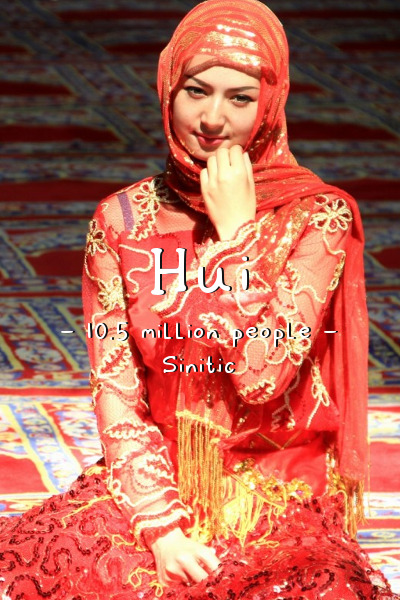
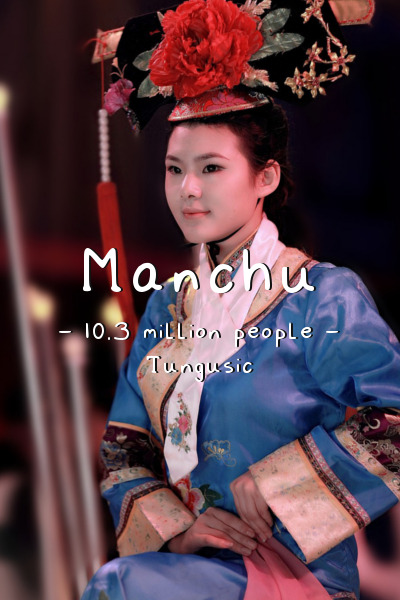

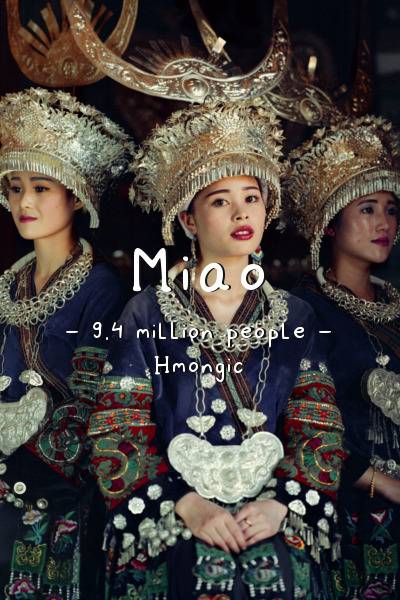
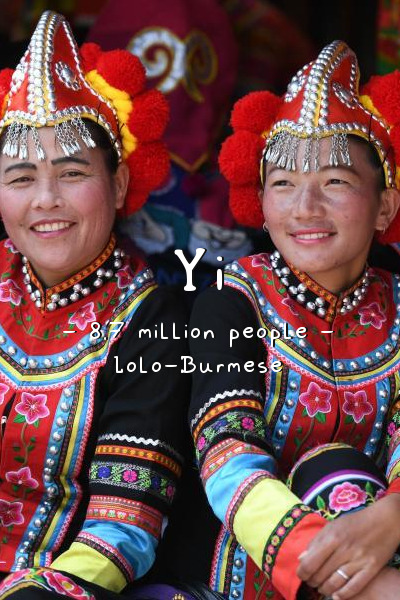

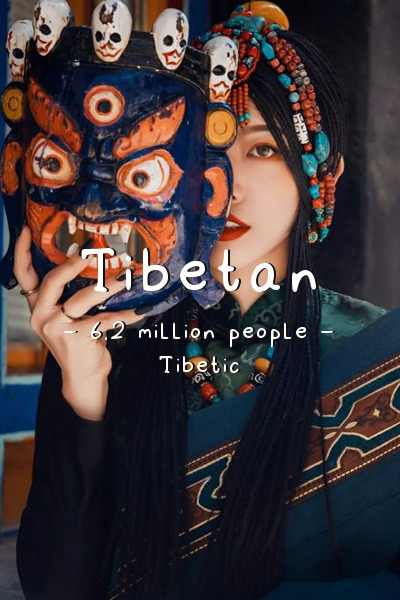


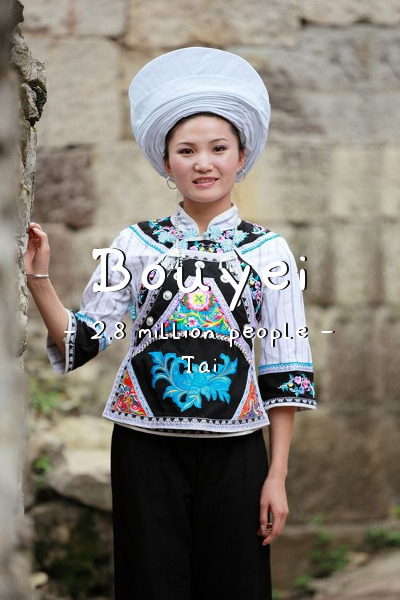

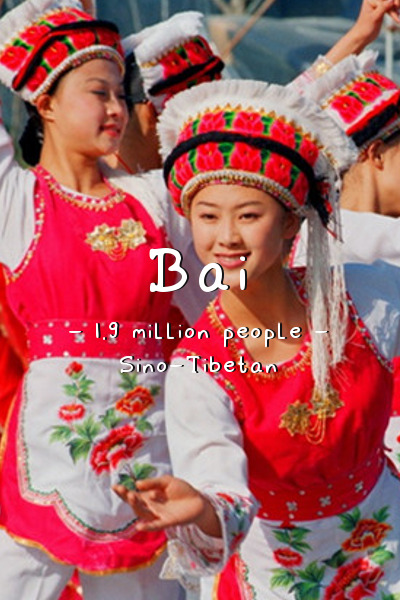




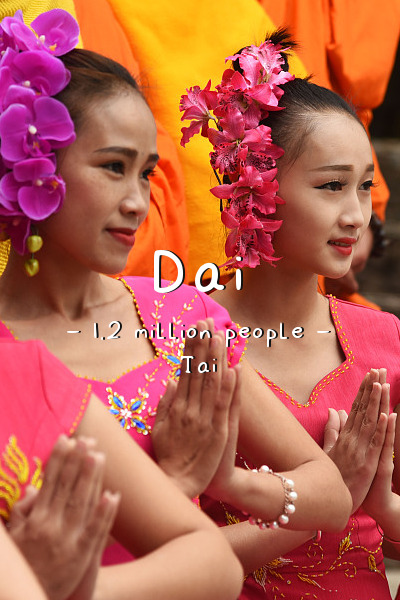
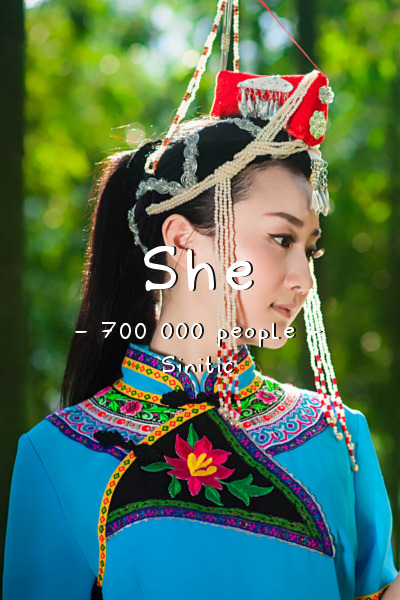




The people of China : Part 1
[The beginning of a serie. I use the official names and numbers but they are a bit old now]
#people of china#china#asia#east asia#han#zhuang#manchu#uyghur#hui#miao#yi#tujia#tibetan#mongol#dong#bouyei#yao#bai#korean#hani#li#kazakh#dai#she#lisu#dongxiang#gelao#lahu
169 notes
·
View notes
Text
May 1: Manifest
1 John 1:1-2
That which was from the beginning, which we have heard, which we have seen with our eyes, which we looked upon and have touched with our hands, concerning the word of life— the life was made manifest, and we have seen it, and testify to it and proclaim to you the eternal life, which was with the Father and was made manifest to us—
Manifest: plain or obvious to our eyes. The Word of Life, Christ himself, has been shown clearly before our eyes through the testimony of Jesus’ disciples and through our personal experience of salvation and being filled with the Holy Spirit. But this Jesus who is known and clear to us is still unknown to millions of Bouyei people living in China and Southeast Asia.
Welcome to the Month of Prayer for the Bouyei people. Thousands around the world will be praying for this precious people group throughout this month, and we invite you to check back here daily for stories and reflections to guide our prayers. The theme of this year’s Month of Prayer is “Darkness to Light” using Scripture from 1, 2, and 3 John.
As Bouyei life undergoes modernization and transformation, most Bouyei people are still living in spiritual darkness without testimony to the Light of Life. But how brightly the light shines in and through those who have come to know Christ. Many are the temptations, hardships, and pressures on Bouyei people, but how much more wonderful is the manifest Christ who seeks to lift them into paths of light.
Pray for Bouyei people to hear, see, and touch the world of life, that Christ would be real to them in the dark times and struggles of their lives.
0 notes
Text
Entry 6
On July 14, Tiktok Group's public welfare project "Toutiao Seeking People" announced that by July 2022, it had helped more than 19000 separated families to reunite, and helped 59 people go home at most one day. Among the lost people who were recovered, the longest was 80 years, the fastest was 60 seconds, the oldest was 101 years old, and the youngest was only 3 months.
Toutiao Search is a public welfare search project launched by Toutiao in February 2016. Its core principle is to distribute search information based on geographic location accurate pop-up technology, and it is committed to helping all kinds of separated families find the lost with scientific and technological means. According to the White Paper on China's Lost Population (2020) issued by the research institute under the Ministry of Civil Affairs, the elderly, minors, disabled and mentally retarded people, migrant workers, vagrants and beggars with no means to live are vulnerable groups.
With the development of the headline search project, platforms such as Tiktok have gradually joined. Since December 2021, Tiktok platform and volunteers have started the live broadcast of family searching to help parents and children spread the information of family searching. As of June 30, 2022, Tiktok has successfully helped 751 people go home by pop-up window and releasing 14681 notices.
For more than six years, "Headline Search" has launched "Cross Strait Search for Relatives", "Search for Martyrs' Descendants", "Search for Old comrades in arms", "Chinese Search for Roots", "Tiktok Search for Persons" and other special projects, and has cooperated with a number of public welfare organizations, local civil affairs departments, and relief stations to continuously expand the type of search for relatives. At present, Headline Search has become one of the largest Internet public welfare search platforms.
The relevant person in charge of the headline search introduced that Tiktok search made the search more diversified, opening up a new channel for searching for relatives, and the creator ecology of Tiktok platform also provided more resources for searching for relatives. As of July 10, Tiktok search volunteers have successfully recovered 458 people.
Huang Defeng (net name: Xiao Xiao) is one of the search volunteers active in Tiktok, and has helped 7 search for relatives to find their families. He was originally a Bouyei youth who was keen on spreading national language. In September 2020, Feng Xiaoxiao received help in Tiktok. Through voice recognition, he successfully helped the Bouyei elderly Deliang, who had been abducted for 35 years, find his relatives. In May and June of this year, he helped a 60 year old man of Yunnan Zhuang and an 80 year old man of Guangxi Zhuang to find their relatives who had been separated for more than 30 years by identifying national languages and releasing videos.
Li Jingwei, a recipient of the Headline Hunting Project, was abducted at the age of four and has been searching for relatives for 33 years. On December 15, 2021, he used his memory to draw a map of his hometown by hand, and asked Gan Biao, a volunteer looking for people on Tiktok, to release a video of looking for relatives. 13 days later, he finally found his mother, brothers and sisters in Zhaotong, Yunnan. After the successful marriage recognition, Li Jingwei has also become a Tiktok search volunteer, releasing nearly 100 videos of family search, and has helped many people find their families.
In July 2021, Li Shuqin, a native of Zunyi, Guizhou, found his brother who had been missing for 33 years within two days through the video released by Wang Xiaoxin, a search volunteer on Tiktok. Now, he has also become a Tiktok looking for people volunteer. He has released 39 videos of looking for relatives, successfully helping to find two people. It is reported that Li Shuqin's story of looking for relatives has been adapted and shot into a public service short film Two Trees, which will be officially launched on July 15.
0 notes
Photo

Praying for Bouyei in China @unreached_peoples . . . #unreachedpeoplegroups #unreached #salvation #Jesussaves #prayer #pray #intercession #raptureready #jesusiscoming #christianlife #bodyofchrist #hopeforthenations #narrow #bouyei #China #guizhou #guizhouprovince #ethnicreligion https://www.instagram.com/p/CcOG1YmP1Gu/?igshid=NGJjMDIxMWI=
#unreachedpeoplegroups#unreached#salvation#jesussaves#prayer#pray#intercession#raptureready#jesusiscoming#christianlife#bodyofchrist#hopeforthenations#narrow#bouyei#china#guizhou#guizhouprovince#ethnicreligion
0 notes
Text
Introduction to linguistics
Language relations
Language families
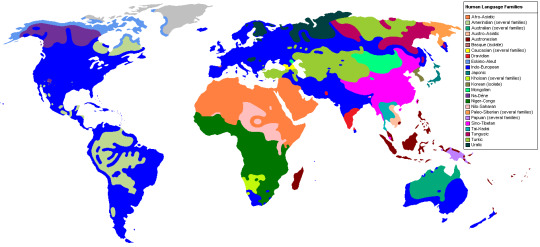
Just like living organisms, languages evolve, and the ones that come from the same ancestor (called “proto-language”) are part of the same language family. A language family can be subdivided into several subfamilies.
Comparative linguistics compares languages in order to establish their historical relatedness. This can be done by comparing their phonology, grammar, and vocabulary, even in cases where there are no written accounts of their ancestors.
The farther languages are from each other, the more difficult it can be to determine if there is a genetic relationship between them. For example, no linguist doubts that Spanish and Italian are related, but the existence of the Altaic family (which would include Turkish and Mongolian) is controversial and not accepted by all linguists. At present, it is simply impossible to know if all languages come from a common ancestor. If an original human language did exist, it would have been spoken tens of thousands of years ago. This makes comparisons extremely difficult or even impossible to perform.
Linguists have identified more than a hundred primary language families, i.e., language families that are not known to be related to each other. Some of them include only a few languages, others more than a thousand. Here are some of the main language families of the world:
Afro-Asiatic (Middle East, North Africa): Amazigh languages (Kabyle, Tamasheq, Zenaga...), Chadic languages (Hausa, Musgu, Tumak...), Cushitic languages (Beja, Oromo, Somali...), Omotic languages (Chara, Hozo, Nayi...), and Semitic languages (Amharic, Arabic, Hebrew...).
Altaic* (Turkey to Siberia): Mongolic languages (Dagur, Khamnigan, Shira Yugur...), Tungusic languages (Manchu, Oroch, Solon...), and Turkic languages (Turkish, Uyghur, Yakut...).
Austroasiatic (southeastern Asia): Aslian languages (Cheq Wong, Mah Meri, Semai...), Bahnaric languages (Alak, Laveh, Sedang...), Katuic languages (Kuy, Pacoh, Ta’Oi...), Khasi-Palaungic languages (Kiorr, Riang, War...), Khmer, Khmuic languages (O’du, Mlabri, Theen...), Mangic languages (Bolyu, Bugan, and Mang), Monic languages (Mon Rao, Mon Ro, Nyah Kur...), Munda languages (Juray, Kharia, Korku...), Nicobarese languages (Car, Nancowry, Teressa...), Pearic languages (Kasong, Somray, Suoi...), and Vietic languages (Cuói, Maleng, Vietnamese...).
Austronesian (southeastern Asia, Taiwan, Pacific, Madagascar): Atayalic languages (Atayal and Seediq), Bunun, East Formosan languages (Kavalan, Nataoran, Siraya...), Malayo-Polynesian languages (Chamorro, Javanese, Sundanese...), Northwest Foromosan languages (Pazeh, Saisiyat, and Thao), Paiwan, Puyuma, Rukai, Tsouic languages (Kanakanabu, Saaroa, and Tsou), and Western Plains languages (Babuza, Hoanya, Taokas....).
Dravidian (south India): Central Dravidian languages (Dhurwa, Kolami, Naiki...), North Dravidian languages (Brahui, Kurukh, and Malto), South-Central Dravidian languages (Chenchu, Gondi, Pengo...), and South Dravidian languages (Badaga, Malayalam, Tulu...).
Indo-European (Europe to India, nowadays all the continents): Albanian, Armenian, Balto-Slavic languages (Latvian, Polish, Russian...), Celtic languages (Breton, Irish, Scottish Gaelic...), Germanic languages (Danish, English, German...), Greek, Indo-Iranian languages (Bengali, Kamkata-vari, Kurdish...), and Italic languages (French, Italian, Portuguese...).
Kartvelian languages (South Caucasus): Georgian-Zan languages (Georgian, Laz, and Mingrelian) and Svan.
Kra-Dai (southeastern Asia): Be, Biao, Hlai languages (Cun, Qi, Run...), Kam-Sui languages (Mak, Mulam, Then...), Kra languages (Lachi, Laha, Qabiao...), Lakkia, and Tai languages (Bouyei, Lao, Shan...).
Na-Dene (North America): Tlingit and Athabaskan-Eyak languages (Ahtna, Hupa, Navajo...).
Niger-Congo (Sub-Saharan Africa): Atlantic-Congo languages (Bariba, Lingala, Yoruba...), Bangime, Dogon languages (Dogul, Jam Sai, Tebul...), Ijaw languages (Izon, Kalabari, Oruma...), Katla languages (Domorik and Kaalak), Mande languages (Goo, Loma, Soninke...), Rashad languages (Tagoi and Tegali), Siamou, Talodi-Heiban languages (Logol, Moro, Tocho...).
Northeast Caucasian languages (Caucasus): Avar-Andic languages (Andi, Avar, Bagvalal...), Dargic languages (Chirag, Itsari, Kajtak...), Khinalug, Lak, Lezgic languages (Aghul, Archi, Rutul...), Nakh languages (Bats, Chechen, and Ingush), and Tsezic languages (Bezhta, Hinukh, Khwarshi...).
Northwest Caucasian languages (northwestern Caucasus): Abazgi languages (Abaza and Abkhaz) and Circassian languages (Adyghe and Kabardian).
Sino-Tibetan (Asia): Bai, Bodo-Garo languages (Atong, Bodo, Megam...), Jingpho-Luish languages (Ganan, Jingpho, Sak...), Karenic languages (Pa’o, Pwo, Sgaw...), Kuki-Chin languages (Falam, Mro, Thaiphum...), Lolo-Burmese languages (Gong, Mru, Naxi...), Meitei, Sinitic languages (Caijia, Hokkien, Taihu Wu...), Tamangic languages (Chantyal, Gurung, Kutang...), and Tibetic languages (Balti, Dzongkha, Sikkimese...).
Tupian (South America): Arikem languages (Arikem, Kabixiana, and Karitiâna), Awetï, Mawé, Monde languages (Aruáshi, Gavião do Jiparan, Suruí...), Mundurukú languages (Kuruáya and Munduruku), Puruborá-Ramarama languages (Karo, Puruborá, and Urumi), Tuparí languages (Makuráp, Mekéns, Tuparí...), Tupi-Guaraní languages (Guajá, Sirionó, Tapirapé...), and Yurúna languages (Jurúna, Maritsauá, and Xipaya).
Uralic (central, eastern, and northern Europe, northern Asia): Finno-Permic languages (Komi, Livonian, Ume Sámi...), Hungarian, Khanty, Mansi, and Samoyedic languages (Enets, Nganasan, Selkup...).
*Some linguistics claim that the similarities found between subfamilies are due to borrowings or chance and not due to a genetic connection between them.
I have chosen three languages from different branches as examples for each subfamily, but of course, in most cases, there are many more. Some languages have several names, so I have used the most common one.
Language isolates
A language isolate is a language that has not been proven to belong to a known language family. The best example is Basque, spoken in Spain and France. Even though it is surrounded by Indo-European languages, it is very different from them. Linguists have compared Basque and other languages spoken in Europe, the Caucasus, and even America, but no relationship has ever been demonstrated.
Korean is another well-known isolate, although some linguists have proposed a relationship with the Altaic languages or Japanese. Japanese itself is sometimes considered an isolate, but it is best described as belonging to the small Japonic family, which includes a few related languages such as Okinawan.
239 notes
·
View notes
Text
ethnic regions of the world(part 1)
Abazinia(Russia)-Abazins
Aceh(Indonesia)-Acehnese
Edo state(Nigeria)-Afemai
Assam(India)-Ahom, Chutiya
Dabou(Ivory Coast)-Adjoukrou
Gold Coast(Ghana)-Akan
Ambon Island(Indonesia)-Ambonese
Amharia(Ethiiopia)-Amhara
Akwa Ibom State(Nigeria)-Anaang
Apacheria (United States)-Apache
Kaduna State (South Sudan)-Atyap
Dagestan (Russia)-Avars, Dargins
Awadh (India)-Awadhis
Central Highlands (Vietnam)-Bahnar
Dali Bai Autonomous Prefecture (China)-Bai
Bakossi Mountains (Cameroon)-Bakossi
Bali (Indonesia)-Balinese
Kabardino-Balkaria (Russia)-Balkars
Gilgit-Baltistan (Pakistan)-Balti
Cameroon (West and Northwest Regions)-Bamileke
West Region (Cameroon)-Bamum
South Kalimantan (Indonesia)-Banjarese
Bassaland (Liberia)-Bassa
Bashkortostan (Russia)-Bashkirs
North Sumatra (Indonesia)-Batak
Plateau State(Nigeria)-Berom
Jakarta(Indonesia)-Betawis
Bicol Region(Philippines)-Bicolanos
Sarawak(Malaysia)-Bidayuh
Lake Fitri (Chad)-Bilala
Soccsksargen (Philippines)-Blaan
Bas-Uele (Democratic Republic of the Congo)-Boa
Bodoland (India)-Bodo
Guizhou (China)-Bouyei
Balochistan (Pakistan)-Brahuis
Brittany (France)-Bretons
Wamba Territory (Democratic Republic of the Congo)-Budus
South Sulawesi (Indonesia)-Buginese
Gilgit-Baltistan (Pakistan)-Burusho
Buton (Indonesia)-Butonese
Mariana Islands (United States)-Chamorro
Chechnya (Russia)-Chechens
Chuuk Lagoon (Federated States of Micronesia)-Chuukese
Chuvashia (Russia)-Chuvash
Circassia (Russia)-Circassians
Chittagong Hill Tracts (Bangladesh)-Chakmas
Cornwall (United Kingdom)-Cornish
Corsica (France)-Corsicans
Cuyo Archipelago (Philippines)-Cuyunon
Kingdom of Dagbon (Ghana)-Dagombas
Damaraland (Namibia)-Damara
Deccan (South-Central India)-Deccani
Bandiagara Escarpment (Mali)-Dogon
Jammu Division (India)-Dogra
Gujarat(India)-Dubla, Gujarati
3 notes
·
View notes
Photo
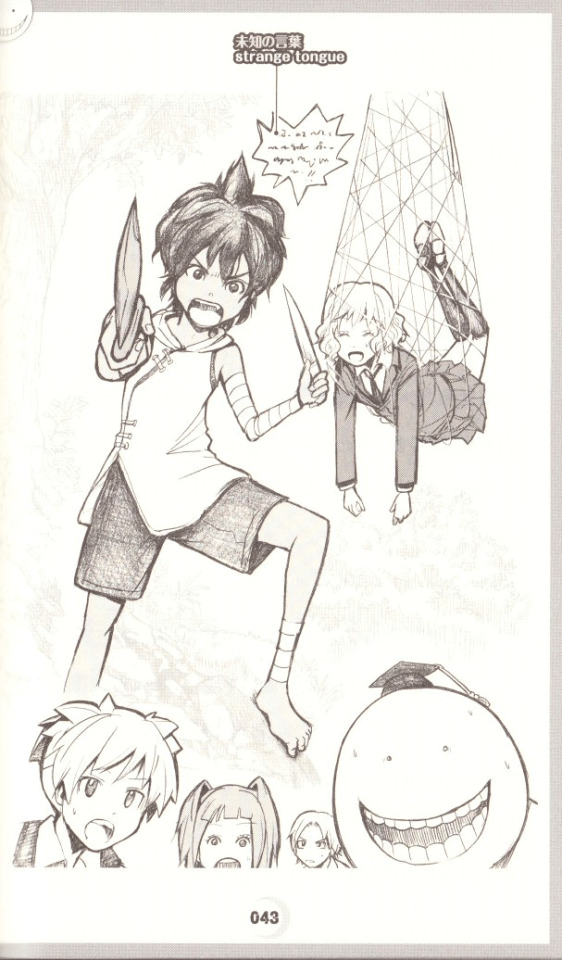
English Translation of Korotan B: Chapter 2 - Mistake Time
Here’s chapter 2! In this chapter, Class E meets the mysterious boy, so we get some dialogue from several students. Though, Maehara, Isogai, Terasaka, and, as before, Kurahashi seem to make up the core of this chapter. Alongside Korosensei, of course. The dialogue in bold was bold in the original text.
Chapter 2: Mistake Time
“I kinda got caught~”
She blithely informed the students who came to search for her from inside the net. The sight shocked Nagisa. Kurahashi was caught inside a roughly-made net hanging from a sawtooth oak tree. She was holding a Caucasus beetle in her hands. Right beside her, an unfamiliar boy was sitting on a branch, shouting something incomprehensible as he brandished a bamboo knife. The other students were also baffled by the sight as they caught up.
“Who’s the brat?”
“Looks like a foreigner.”
“What language does he speak?”
“We’re in a bit of a pinch, aren’t we?”
While several students talked among themselves, Kurahashi introduced the class to the boy.
“Umm, the boy said something like ‘I return the hostages to assassination, they will be killed calmly.’~”
This only confused Class E.
“The hell does that even mean, Kurahashi!?”
“I’m just saying, that’s what he said.”
Korosensei finally arrived after following his students. Upon hearing Kurahashi’s and Terasaka’s conversation, he clasped two of his tentacles together and nodded.
“I see. So that’s how it is. You’re not hurt, are you, Kurahashi-san?”
“Nope!”
“Then, rest assured, I’ll free you soon.”
Seeing Korosensei and Kurahashi interact so nonchalantly, the boy got angry and bared his teeth. He held his bamboo knife to Kurahashi’s throat.
“Shit! This guy’s serious!”
They had Kurahashi and the boy surrounded, but still, tension ran through the class.
“I return the hostages to assassination, they will be killed calmly.”
After the boy made this declaration, he said something else, this time in an unfamiliar language.
“Like I said before, we have no clue what the hell you’re saying! Try saying something we can actually understand!”
As though Maehara’s shouting got through to him, the boy pulled out another knife while keeping his bamboo knife against Kurahashi’s throat, one familiar to Class E, an anti-sensei knife. He pointed it at Korosensei.
“Are you an assassin, too?”
With Okajima’s conjecture, everyone else in 3-E began to understand the situation, but the tension didn’t disappear.
“Hey, release her!”
Upon Isogai’s request, which he made in English, the boy replied,
“If I let this go, you die.”
Impatient with the way things were going, Maehara took a step forward, causing the boy to move his knife toward Kurahashi’s throat. In that moment, Korosensei moved at mach 20 speed. He sneaked behind the boy in an instant, brushed away the bamboo knife, and freed Kurahashi from her net.
“Thank you, Korosensei~”
Korosensei lowered Kurahashi to the ground.
“Nuru-fufufu, a blade of that degree won’t reach me nor my students!”
Seeing this display of composure, the boy cut a vine that was clinging to the sawtooth oak tree. Suddenly, the ground collapsed and Korosensei fell with the dirt and debris.
“Nyu-yah!?”
Korosensei stretched his tentacles and stuck them to the walls of the pitfall.
“Phew, I’m saved.”
As he was wiping off his cold sweat, the boy jumped off his tree and attacked.
“Nyu-yaaaah!?”
The boy attacked him with a rush from his two blades, cutting the tentacles Korosensei was using to hold himself up.
“Eeeeeeek!”
Korosensei tried to escape from the pitfall in a panic, but he ended up tangling his tentacles together. With his movements dulled, the boy roared as he thrusted his knife toward Korosensei’s eye. However, Korosensei was able to just barely dodge the attack, causing the boy to lose his balance.
“!!”
The boy began to fall into the hole. He grabbed some strands of grass growing on the edge of the pit, just barely preventing his fall. The students of Class E rushed around the hole as they watched everything unfold. They saw a number of anti-sensei knives tied to bamboo spears sticking out from the bottom of the hole.
“Hey, are you okay!?”
Isogai reached his hand out to the boy, but the boy only clenched his teeth as he clung desperately, ignoring Isogai’s help. The grass gradually began to tear under the boy’s weight.
“It’s futile, Isogai-kun. If the person you’re trying to help doesn’t want to be saved, then they won’t take your hand even if you offer it.”
“But, at this rate, he’ll die……”
While the boy was clinging to the grass, he screamed a few words in his native language. Korosensei responded using the same language,
“You can’t assassinate me with your level of skill. Now then, you will die if you’re left alone. I don’t intend to save you. If you want to be saved, you need to tell that to everyone in a language they understand. So, what will you do?”
Class E watched the two of them interact, completely breathless. With the boy’s reply, Korosensei turned around and began to return to the class.
The boy shouted at Korosensei, but, realizing the position he was in, quietly murmured,
“Help me…”
Isogai and Maehara quicky grabbed his arms and pulled him up. His eyes were wild, glaring at Korosensei without letting up. Korosensei spoke in the boy’s language once more,
“You sure are lucky my students know English. If you came to a foreign country without at least knowing English, let alone the local language, then successfully carrying out an assassination would’ve been impossible.”
“What did you say just now, Korosensei?”
“I was teaching him about the difficulties of language, Isogai-kun. Even if your weapons are poor, if you’re in a life-or-death situation, you must wield them. I think you all understand after interacting with him just now, but even if you know a little English like this boy, misunderstandings will arise if you fail to connect with each other. After taking such great pains to obtain the weapon known as ‘English’, it would be a waste if you didn’t know how to use it, wouldn’t you agree? How about you all try assassinating me while learning English with him starting tomorrow?”
“You’re makin’ it all about studyin’ again? Hey brat, he’s totally got ya wrapped around his tentacle.”
Terasaka told the boy as he cleaned his ear.
“Well, we have no choice. Once Korosensei says so, there’s no turning back. Hey, you, what’s your name? ……Umm, what’s your name?”
Sugino asked in English. The boy proudly puffed out his chest as he answered,
“It’s Pui!”
“Nice to meet you, Pui~”
With an innocent smile, Kurahashi held out her hand for a handshake. Pui stared at the hand offered to him, completely unmoving.
“Ah ha ha, I guess he’s nervous~”
Shocked by Kurahashi’s innocence, Maehara held his hand to his head.
“Geez, you’re such a softie, Kurahashi. He just held you hostage but you want to shake hands with him?”
“It wasn’t that bad, y’know?”
Maehara didn’t feel like he could push any further in response to Kurahashi’s luxuriant, angelic smile.
“This looks like fun, doesn’t it, Nagisa?”
Kayano said to Nagisa with a carefree grin.
Korosensei has a habit of caring for any killer who comes to assassinate him with a rusty blade. This boy had set a trap, but he fell straight into his target’s trap instead.
Nagisa secretly pitied the young killer.
Notes:
I tried looking up Pui’s name in an attempt to determine his origin. When I search プイ, I get the Bouyei people, an ethnic group living in southern mainland China and parts of Vietnam. Weblio also suggests that Pui can be Romanized as “Puey”, which pulls up some Thai and Filipino people. Basically, I can’t pinpoint where he’s supposed to come from, but he’s probably supposed to be of Southeast Asian descent. Maybe we’ll be able to figure it out as we go along.
Sometimes, I forget that Korosensei can be a bit brutal when he wants someone to learn something ^^;
#assassination classroom#ansatsu kyoushitsu#korotan B#Korosensei#Maehara Hiroto#hinano kurahashi#Isogai Yuuma#terasaka ryoma#Pui#translations
93 notes
·
View notes
Photo

One more round of Chinese traditional dresses!!! . . 1. Again, my modern cheongsam! Traditional Manchu cheongsam were much more elaborate and significantly less fitted, the modern version we know today was popularized by Shanghai celebrities in the early 20th century!! 2. Tibetan traditional dress; Tibet has been occupied by China since 1951, and the mass cultural genocide on the part of the Chinese government in an attempt to eradicate the Tibetan way of life has led to the exile of the Dalai Lama and the mass exodus of Tibetans for refuge in other countries 3. Mongol traditional dress; the Mongol population in China is actually about twice the size of the Mongol population in the sovereign state of Mongolia 4. Bouyei traditional dress; the Bouyei ethnic group is one of the largest in China, and they are closely related culturally to Zhuang peoples (for Zhuang traditional dress see Monday’s post) 5. Hmong traditional wedding dress; during the first and second Indochina Wars, CIA operation Secret War recruited thousands of Hmong peoples to fight communism in Laos, Vietnam, and Cambodia . . A friendly reminder that Chinese culture is not a monolith. Conflict between ethnic groups in China has to many human rights violations, and many ethnic groups still suffer today from cultural eradication, religious suppression, and genocide. These are a reflection of the totalitarian power of the Chinese government, NOT of the moral value of Chinese people as a whole. We can critique human rights in China without resorting to the demonization of an entire racial group https://www.instagram.com/p/COgX3YPDwPi/?igshid=mwkwe2axa1ij
0 notes
Text

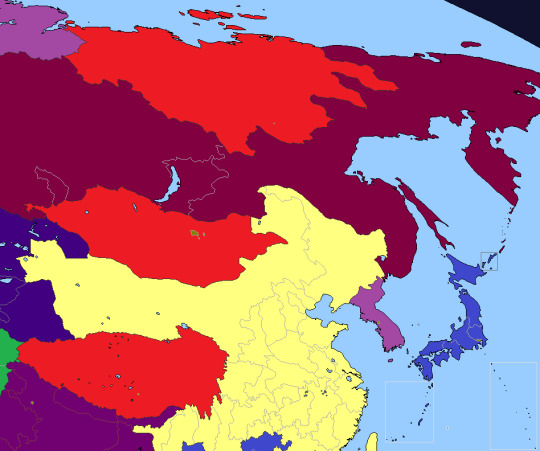




:North Asia:
Sakha
Mongoluls
:South Asia:
Pakistan
Republics:
- Baluchistan
- Kashmir
- Pashtunistan
- Punjab
- Sindh
Baharat:
Republics:
- Bali, Fiji and overseas Republic
- Bangladesh
- Guajarat
- Hindistan
- Karnataka
- Kerala
- Maharasthra
- Nepal
- Oriya
- Rajasthan
- Sikhadharat
- Sri Lanka
- Tamilnilam
- Telugu
:East Asia:
Bod
Hanguk
Nippon
Republics:
-Hokkaido
-Tohoku
-Kanto
-Chubu
-Kansai
-Chugoku
-Shikoku
-Kyushu
-Okinawa
Zhōngguó
Republics:
- Ménggu(Inner Mongolia)
- Manzhōu(Manchuria)
- Bamar (Burma)
- Āsàmubāng(Assam)
- Fujian (includes Taiwan and Hainan)
- Jin(formerly Shanxi)
- Shaanxi
- Heibei
- Beijing-Tianjin
- Shandong
- Heinan
- Hubei
- Chongqing
- Sichuan
- Anhui
- Jiangsu
- Wu(Zhejiang)
- Gan (North Jiangxi)
- Hakka (South Jiangxi)
- Yue (Guangdong)
- Xiang(Hunan)
- Miao(Guizhou)
- Zhuang(Guangxi)
- Hmong
- Bouyei
- Yi
- Quítamiandiàn
:South East Asia:
Bali (India)
Indonesia
Republics:
-Yogyakarta
-Banten
-Central Java
-East Java
-West Java
-Aceh Riau
-Sumatra
-Kalimantan
-Suliwesi Maluku and Nusa Tenggara
Kampuchea
Pilipinas
-Ilocano
-Kampapagan
-Tagalog
-Hiligaynon Ilonggo
-Bicol
-Cebuano
-Waray
-Bisaya
Siam
Republics:
-Bangkok
-Lopburi
-Prothesthiy
-Ayudhya
-Laos
-Shan
-Isaan
-Lanna
-Kradai
-Kwangsi
Vietnam
0 notes
Photo

Ethno-linguistic distribution of the Nung , Tay, Zhuang and Bouyei in South China and Northern Vietnam.
68 notes
·
View notes
Text
Downloadable Prayer Guide
You can download your own copy of the prayer guide for this year's Month of Prayer here.
Full color: https://drive.google.com/file/d/1aX9hog8mZUX_xMq59t7JKWrZQmXbPJ0n/view?usp=drive_link
Printable: https://drive.google.com/file/d/1ppwnytinB-xwIzVJv2fIaqDX51fTfQrV/view?usp=drive_link
0 notes
Text
Writing systems
Latin
The Latin, or Roman, script was originally adapted from the Etruscan alphabet during the 7th century BCE to write Latin. The earliest known inscription dates from the 6th century BCE.
The letters -y- and -z- were taken from the Greek alphabet to write Greek loan words. Other letters were added from time to time as it was adapted for other languages.
The modern Latin script is used to write hundreds of different languages. Each language uses a slightly different set of letters, and they are pronounced in various ways.
It is the basis for the largest number of alphabets of any writing system and is the most widely adopted writing system in the world.
Notable features
Type of writing system: alphabet
Direction of writing: left to right in horizontal lines
Number of letters: 26 (standard letters)
Used to write: Aari, Abaza, Abellen, Abenaki, Abkhaz, Abui, Acehnese, Achagua, Achang, Acheron, Achi, Acholi, Achuar-Shiwiar, Achumawi, Adaizan, Adamua Fulfulde, Adzera, Afaan Oromo, Afar, Afrikaans, Aguaruna, A-Hmao, Ahtna, Ainu, Aja, Ajië, Akan, Akatek, Aklan, Akurio, Alabama, Albanian, Aleut, Algonquin, Alsatian, Altay, Alur, Alutiiq, Alyawarr, Amahuaca, Amarakaeri, Amarasi, Amele, ǂ’Amkoe, Amis, Andoa, Angami, Anuki, Anutan, Apache, Apma, Apurinã, Arabela, Aragonese, Araki, Aranese, Arapaho, Arawak, Arbëresh, Are, Arikara, Aringa, Aromanian, Arrernte, Arvanitic, Asháninka, Ashéninka, Assiniboine, Asturian, Atayal, Atikamekw, Atong, ‘Auhelawa, Avokaya, Awa Pit, Awara, Awing, Aymara, Azeri, Babine-Witsuwit’en, Bade, Bai, Baka, Bakairi, Balangao, Bambara, Baniwa, Banjar, Bantoanon, Baoulé, Barai, Barbareño, Bari, Bariba, Bartangi, Bashkir, Basque, Bassa, Bavarian, Beaver, Belarusian, Beli, Bemba, Bench, Betawi, Biete, Bikol, Biloxi, Bininj Kunwok, Bislama, Blackfoot, Blagar, Blin, Boholano, Bokar, Bolinao, Bongo, Bontoc, Bora, Bosnian, Botolan, Bouyei, Brahui, Breton, Bribri, Bugis, Buglere, Buhutu, Bulu, Bundjalung, Bunun, Burushaski, Busa, Bushi, Bwaidoka, Cabécar, Caddo, Caluyanon, Candoshi-Shapra, Cape Verdean Creole, Caquinte, Carib, Carijona, Carolinian, Casiguran Dumagat Agta, Catalan, Cayuga, Cebuano, Central Sinama, Chami, Chamicuro, Chamorro, Chang, Cha’palaa, Chatino, Chavacano, Chechen, Cherokee, Cheyenne, Chinanteco, Cimbrian, Chichewa, Chickasaw, Chilcotin, Chinook, Chipeyan, Chippewa, Chitimacha, Chiwere, Choctaw, Chokwe, Ch’ol, Chorti, Chrau, Chru, Chukchansi, Chuukese, Cipu, Cocopah, Coeur d’Alene, Cofán, Comanche, Comorian, Comox, Cora, Cornish, Corsican, Cree, Creek, Croatian, Crow, Cubeo, Cumbric, Curripaco Cuyonon, Cypriot Arabic, Czech, Daga, Dagaare, Dagbani, Dalmatian, Danish, Dananshan Miao, Dargwa, Daur, Dawan, Dayak, Daza, Deg Xinag, Dena’ina, Dengebu, Dhao, Dholuo, Dhuwal, Digaro Mishmi, Digo, Dinka, Ditidaht, Dijanang, Djinba, Dogrib, Domari, Dongotono, Drehu, Drung, Duala, Dupaningan, Duri, Dusun, Dutch, Edo, Efik, Ekoka !Kung, Elfdalian, Emae, Emilian-Romagnol, English, Enindhilyagwa, Eperara, Esperanto, Estonian, Ewe, Ewondo, Extremadura, Eyak, Fala, Fanagalo, Fang, Fante, Faroese, Fijian, Fiji Hindi, Finnish, Flemish, Folkspraak, Fon, Fox, Franco-Provençal, French, French Guianese Creole, Frisian, Friulian, Fula, Fur, Futuna-Aniwa, Futunan, Fuyu Kyrgyz, Ga, Gagauz, Galician, Gallo, Galoli, Gamilaraay, Ganda, Garawa, Garifuna, Garo, Gawwada, Gen, Genoese, German, Ghadamès, Ghomara, Gija, Gitxsan, Goemai, Gonja, Gooniyandi, Gottscheerish, Greenlandic, Griko, Guadeloupean Creole, Guambiano, Guanano, Guarani, Guaymí, Guere, Guernésiais, Gugadja, Glui, Guinea-Bissau Creole, Guugu Yalandji, Guugu Yimiyhirr, Gwere, Gwich’in, Haida, Haisla, Haitian Creole, Halkomelem, Hamer, Hän, Hani, Hausa, Hawaiian, Hawu, Heiltsuk, Herero, Hidatsa, Hiligaynon, Hiri Motu, Hixkaryana, Hmar, Hmong Dau, Hmong Njau, Hmu, Hoava, Ho-Chunk, Hopi, Huambisa, Hungarian, Huarijio, Huasteco, Huichol, Huilliche, Hunsrik, Hupa, Iban, Ibibio, Icelandic, Ido, Idu Mishmi, Ifugao, Igbo, Ikizu, Ikpeng, Ilocano, Inapari Sami, Indonesian, Ingrian, Ingush, Interglossa, Interlingua, Interslavic, Innu-aimun, Iñapari, Iñupiaq, Ipai, Iraqw, Irish, Ishkashimi, Isnag, Istriot, Italian, Iu Mien, Ivatan, Ivilyuat, Ixil, Jabo, Jakaltek, Jamaica, Jaminjung, Japreria, Jaqaru, Jarai, Jarawa, Javanese, Jebero, Jersey Norman French, Jicarilla, Jingulu, Jita, Jola-Fonyi, Jru, Judeo-Spanish, Jul’hoan, Juhuri, Jur Modo, Kabiye, Kabyle, Kadazandusun, Kadugli, Kagayanen, Kaingang, Kaiwá, Kakabai, Kala Lagaw Ya, Kam, Kambari, Kamda, Kanakavanu, Kanasi, Kanga, Kaninuwa, Kanuri, Kapampangan, Kapingamarangi, Kaqchikel, Karaim, Karakalpak, Karamojong, Karbi, Karelian, Karuk, Kasem, Kashaya, Kashibo, Kashinawa, Kashubian, Kaska, Kaurna, Kavalan, Kawaiisu, Kazakh, Keiga, Keliko, Keres, Ket, Khakas, Khasi, Khinalug, Khoekhoe, Khorasani Turkic, Khufi, Ki’che, Kichwa, Kickapoo, Kikuyu, Kiliwa, Kimbundu, Kinaray-a, Kinyarwanda, Kiribati, Kirundi, Kisi, Kissi, Kituba, Klallam, Klamath, Klingon, Koho, Koasati, Kom, Kongo, Konjo, Konkani, Kosraen, Koti, Kove, Koyukon, Kri, Krongo, Kumeyaay, Kumyk, Kuna, Kuot, Kunjen, Kurmanji Kurdish, Kurti, Kutenai, Kuuk Thaayorre, Kven, Kwak̓wala, Laalaa, Lacandon, Lahu, Lampung, Latin, Latino sine Flexione, Latgalian, Latvian, Ledo Kaili, Lele, Leonese, Lezgi, Lingala, Lingua Franca Nova, Ligurian, Lilloet, Limba, Limburgish, Liq’wala, Lithuanian, Livonian, Llanito, Lojban, Lombard, Lopit, Lote, Lotuko, Loup, Lower Tanana, Lokoya, Lozi, Ludic, Luganda, Lugbara, Luiseño, Lule Sami, Lumun, Luobohe Miao, Lushootseed, Luxembourgish, Maasai, Machiguenga, Macushi, Ma’di, Madurese, Makah, Makasarese, Makonde, Makhuwa, Malagasy, Malay, Malecite-Passamaquoddy, Maltese, Mam, Mandan, Mandar, Mandinka, Mangareva, Manggarainese, Maninka, Mankanya, Mano, Manx, Maore, Maori, Mapuche, Maranao, Marba, Maricopa, Marshallese, Masbateño, Mashan Miao, Maskelynes, Massachusett, Martu Wangka, Mato, Maung, Mauritian Creole, Mayo, Mazahua, Mazatec, Matigsalug, Mbula, Mbum, Megleno-Romanian, Mele-Fila, Menominee, Meriam Mir, Mescalero-Chiricahua, Miami, Michif, Mikasuki, Mi’kmaq, Miju, Minangkabau, Mirandese, Miriwoong, Miskito, Mixtec, Miya, Mizo, Mòcheno, Mohawk, Mohegan, Mohican, Mojave, Mokilese, Moldovan, Monégasque, Monguor, Mono, Montagnais, Montenegrin, Moriori, Morokodo, Moronene, Mortlockese, Moru, Mossi, Motu, Mozarabic, Mualang, Muna, Mundari, Munsee, Muong, Murrinh-Patha, Murui Huitoto, Musey, Musi, Mutsun, Mwaghavul, Mwani, Mwotlap, Nagamese, Nahuatl, Nanti, Narim, Naro, Narrangansett, Naskapi, Natchez, Nauruan, Navajo, Naxi, Ndrumbea, Ndyuka, Neapolitan, Nenets, Nez Perce, Ngaanyatjarra, Ngiyambaa, Nigizim, Nheengatu, Nias, Nihali, Nisga’a, Niuafo’ou, Niuean, Nkore, Nobiin, Nomatsiguenga, Noonm Noogar, Norfuk, Norn, North Frisian, North Slavey, Northern Emberá, Northern Ndebele, Northern Paiute, Norther Pomo, Northern Sami, Northern Sotho, Norwegian, Northwest Maidu, Novial, Nuer, Nukuoro, Nukuria, Nunggubuyu, Nupe, Nuu-Chah-Nulth, Nuxalk, Nllng, Nyelâyu, Nyole, Nzema, Occidental, Occitan, Okanagan, Okinawan, Olu’bo, Onge, Onandaga, O’odham, Oowekyala, Omaha, Oneida, Old Norse, Ona, Ontong Java, Oromo, Oroqen, Oroshor, OshiWambo, Ossetian, Otomi, Ottawa, Paakantyi, Paama, Páez, Paicî, Paipai, Paite, Paiwan, Palauan, Palenquero, Panare, Pangasinana, Papantla Totonac, Papiamento, Paraujuano, Paresi, Patwin, Pauna, Pawnee, Paya, Pazeh, Pemon, Penrhyn, Piapoco, Picard, Piedmontese, Pikin, Pilagám, Pingelapese, Pintupi, Pipil, Pirahã, Pite Sami, Pitjantjatjara, Pochuri, Pohnpeian, Polci, Polish, Pomo, Pontic Greek, Portuguese, Potawatomi, Powhatan, Pukapukan, Puluwatese, Purepecha, Puyuma, Q’anjob’al, Q’eqchi’, Qo Xiong, Quapaw, Quechan, Quechua, Quiripi, Rade, Raga, Rakahanga-Manihiki, Rapa Nui, Rarotongan, Rennellese, Réunion Creole, Rifian, Ripuarian, Rohingya, Ronga, Rotokas, Romani, Romanian, Romániço, Romansh, Rotuman, Roviana, Rukai, Rushani, Saanich, Saaroa, Safen, Sahaptin, Saisiyat, Sakao, Sakapultek, Salar, Saliba, Salish, Sambal, Samoan, Sanglechi, Sango, Saramaccan, Santa, Sardinian, Sarikoli, Sarnámi Hindustani, Sasak, Saterland Frisian, Satawalese, Savosavo, Scots, Scottish Gaelic, Secoya, Sedang, Seediq, Sekani, Sena, Seneca, Serbian, Serer, Seri, Serrano, Seychelles Creole, Seto, Shavante, Shawiya, Shawnee, Sheko, Shetlandic, Shilha, Shilluk, Shipibo, Shona, Shoshone, Shuar, Shughni, Shuswap, Siar, Sicilian, Sierra Leonean Creole, Sikaiana, Silesian, Sio, Sioux, Skolt Sami, Slovak, Slovene, Slovio, Soga, Somali, Soninke, Sonsorelese, Sorbian, South Slavey, Southern Ndebele, Southern Sami, Southern Sotho, Southern Tiwa, Spanish, Squamish, Sranan, Saint Lucian Creole, Stellingwarfs, Stoney, Sumbawa, Sundanese, Supyire, Susu, Swahili, Swati, Swedish, Taa, Tagabawà, Tagalog, Tahitian, Tahltan, Taíno-Borikenaíki, Tairoa, Taiwanese, Tai Ya, Takuu, Talysh, Tamahaq, Tamasheq, Tammari, Taos, Tarahumara, Tami, Tanacross, Tangale, Tangkhul Naga, Tariana, Tatar, Tausūg, Tboli, Tedim, Tehuelche, Teiwa, Terêna, Temne, Tepehuán, Teribe, Ter Sami, Tetum, Thompson, Ticuna, Tii, Tiipai, Tikopia, Timbisha, Tiriyó, Tiwi, Tlapanec, Tlingit, Toba Qom, Tocho, Tojolabal, Tok Pisin, Tokelauan, Tolai, Tolaki, Tolowa, Tombulu, Tondano, Tongan, Tongva, Toposa, Toqabaqita, Toraja-Sa’dan, Torres-Strait Creole, Tsafiki, Tshiluba, Tshimshian, Tsonga, Tsotsil, Tsou, Tsuut’ina, Tswa, Tswana, Tuareg, Tucano, Tumak, Tumbuka, Tunica, Turkish, Turkmen, Turoyo, Tuscarora, Tutchone, Tuvaluan, Tuvan, Twi, Tzeltal, Tz’utujil, Ubang, Ubir, Udege, Udi, Uduk, Ulithian, Umbundu, Ume Sami, UNami, Upper Kuskokwin, Upper Tanana, Urarina, Uyghur, Uzbek, Vadi, Vaeaku-Taumako, Värmlandic, Vastese, Venda, Venetian, Veps, Vietnamese, Volapük, Võro, Vurës, Wa, Wa’di, Wakhi, Wallisian, Walloon, Wambaya, Wandamen, Wantoat, Warlpiri, Waray-Waray, Wardaman, Washo, Wayana, Wayuu, Welsh, Wemba Wemba, Wendat, West Frisian, Western Rote, Wichita, Wik-Mungkan, Winnebago, Wintu, Wiradjuri Wolaytta, Woleaian, Wolof, Wukchumni, Wymysorys, Xârâcùù, Xhosa, Yabem, Yaghnobi, Yami, Yaminawa, Yanesha’, Yang Zhuang, Yao, Yapese, Yaqui, Yazghulami, Yemba, Yimchungrü, Yindjibarndi, Yolngu, Yoruba, Yucatek Maya, Yuchi, Yucuna, Yup’ik, Yurok, Záparo, Zapotec, Zarma, Zazaki, Zeelandic, Zenaga, Zigula, Zinza, Zou, Zulu, Zuni, and Zuwara Berber
Before a vowel or between vowels -i- used to be pronounced /j/. Elsewhere it was pronounced /i/.
Accented letters can be used to modify the pronunciation of a letter, to indicate emphasis in a sentence, pitch or intonation of a word or syllable, vowel length or the stress in a word, and to visually distinguish homophones.
Latin alphabet

Accented letters

Some extra letters

Ligatures

64 notes
·
View notes
Photo


Chinese-Bouyei Dialect Concise Dictionary (Han Bu Yi Jian Ming Ci Dian)
https://www.abebooks.com/servlet/BookDetailsPL?bi=30930604209&searchurl=sortby%3D0%26vci%3D65071755&cm_sp=snippet-_-srp1-_-title2
0 notes
Video
Pingtang Bridge, in SW China’s Guizhou, boasting the highest concrete bridge tower in the world, makes the once landlocked province leap at the chance of transportation development. #FlyOverChina #megastructure Ou Dongqu Located in Bouyei-Miao Autonomous Prefecture of Qiannan, the bridge, a colossal cable-supported viaduct with a span of 2,135 meters, will serve as a major connection on the Pingtang-Luodian Expressway above the Caodu River Canyon. With a height of 332 meters, the diamond-shaped main tower features the world’s tallest reinforced concrete bridge tower. The bridge will be completed and open to traffic by the end of 2019, which is expected to cut the travel time between the canyon by at least an hour. As the only province without plains in #China, #Guizhou has achieved many #worldrecords by building over 20,000 #bridges among its karst mountains. The province now has 46 of the world’s 100 tallest bridges and is known as “the museum of world bridges” due to the vast numbers, various types and complex #technologies of the bridges built over the decades. Through bridge building, #mountainous Guizhou is becoming deeply integrated with the nation’s transportation network with local residents seeing an improved quality of life. (at Pingtang, Guangdong, China) https://www.instagram.com/p/B15z9FbhX-I/?igshid=1tcdx7ym9b9o
0 notes
Text
My homework may not be on time, but I just watched a segment about a Hungarian lady who moved her entire family to China bc she liked it that much (also she started working for the Chinese embassy) visiting the Bouyei people and watching them do acrobatics on an ox so maybe I haven't been all that unproductive
#chinese#mandarin#cctv#my hw was due 35 mins ago#and I'm no where near finishing#but it'll get done#also that lady is big time inspiration#her 3 kids? fluent in Chinese and Hungarian !!#amazing
0 notes
